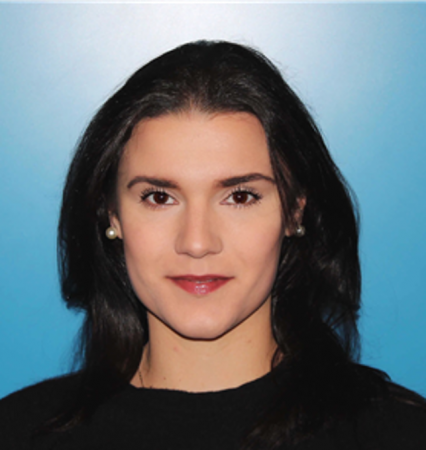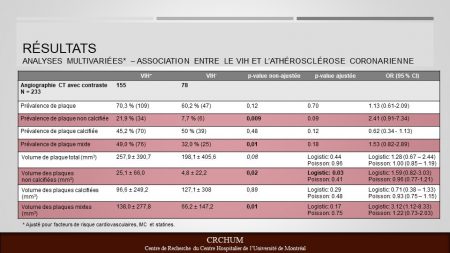
La 7e Journée Universitaire du Département de radiologie, radio-oncologie et médecine nucléaire de la Faculté de médecine de l’Université de Montréal a eu lieu le 21 février 2019 à l’agora du Centre de recherche du CHUM. Trois étudiants ont reçu un prix pour leur présentation.
Deuxième prix – Présentation scientifique orale par un étudiant
Récipiendaire
Irina Boldeanu
Titre de la présentation
Subclinical coronary atherosclerosis among individuals with HIV on antiretroviral therapy – Baseline results from the Canadian HIV and Aging Cohort Study
Équipe
Irina Boldeanu 1,5,6, Manel Sadouni1,5,6 , Samer Mansour 2,5,6, C Tremblay 3,5,6, M Durand 4,5,6 , C Chartrand-Lefebvre 1,5,6
Affiliations
Radiologie 1, Cardiologie 2, Microbiologie 3, Médecine interne 4; CRCHUM 5; Université de Montréal 6
Résumé
Objective. To compare coronary plaque burden and characteristics in HIV+ and HIV- individuals.
Methods. This cross-sectional study nested in a large prospective cohort (ie CHACS) was approved by our ethics committee. Subjects provided written consent. Consecutive HIV+ and HIV- participants without known coronary artery disease and low/intermediate 10-yr Framingham risk score (FRS, 5-20%) were prospectively recruited for coronary calcium CT scoring and plaque assessment. Assessors were blinded to HIV status. Multivariate regression models were used.
Results. 265 participants (181 HIV+ (92% males), 84 HIV- (77% males)) were included (mean 56 yo), with similar FRS. All HIV+ participants were on antiretroviral therapy (ART). Smoking (p<0.001) and dyslipidemia (p ≤ 0.02) were increased in HIV+ participants. After adjusting for cardiovascular risk factors, burden of calcium and overall plaque was similar between HIV+ and HIV- participants. However, HIV+ participants had more (0.33 and 0.12 plaque/participant, p= 0.04) and increased volume (25 and 5 mm3/participant, p= 0.04) of noncalcified plaques compared to HIV- participants. Prevalence, frequency and volume of calcified (p= 0.27, 0.12 and 0.54) and mixed (p= 0.25, 0.15 and 0.18) plaques, as well as ≥ 70% stenosis (p= 0.99) were similar between HIV+ and HIV- participants.
Conclusion. Noncalcified plaques, usually considered more vulnerable plaques, are specifically increased in asymptomatic HIV+ individuals under ART in comparison to HIV- individuals, after adjustment for cardiovascular risk factors. These baseline results will next serve for novel correlative analyses (eg. carotid wall biomechanics, advanced immunological factors) planned with other specialized teams of the CHACS.
Funding and other sources of support. IRSC; FRQS – Radiologie; FRQS – SIDA/MI; Programme de support professoral – Département de radiologie, radio-oncologie et médecine nucléaire, Université de Montréal; Faculté de médecine, Université de Montréal; Société des radiologistes du CHUM


